Transit at Noi Bai International Airport in Hanoi – What You Need to Know in 2024
Navigating through airports during transit can be an overwhelming experience for many travelers, especially when it involves switching between international and domestic flights. Noi Bai International Airport in Hanoi serves as a major hub for connecting flights in Vietnam. Understanding the transit process can make your trip significantly more comfortable and less stressful. Therefore, we put together this guide based on our recent experience making a connection at Noi Bai Airport.
Though we have had many flights from and to Noi Bai, it was our first time transiting through it in February 2024. Overall, the process is quite straightforward. In this guide, you will find the overall process of transiting at Noi Bai Airport from the international terminal to the domestic terminal, along with our personal experience, detailed information and tips.
Overall Process
Transiting from the International Terminal (Terminal 2) to the Domestic Terminal (Terminal 1) at Noi Bai International Airport in Hanoi for a connecting domestic flight involves several steps. Here’s an overview to help you navigate the process.
Arrival and Immigration
After arriving at Terminal 2, you’ll need to go through immigration. Follow the airport signs for Arrival/Transfer directing you to the immigration area. Make sure to have your passport and visa ready.
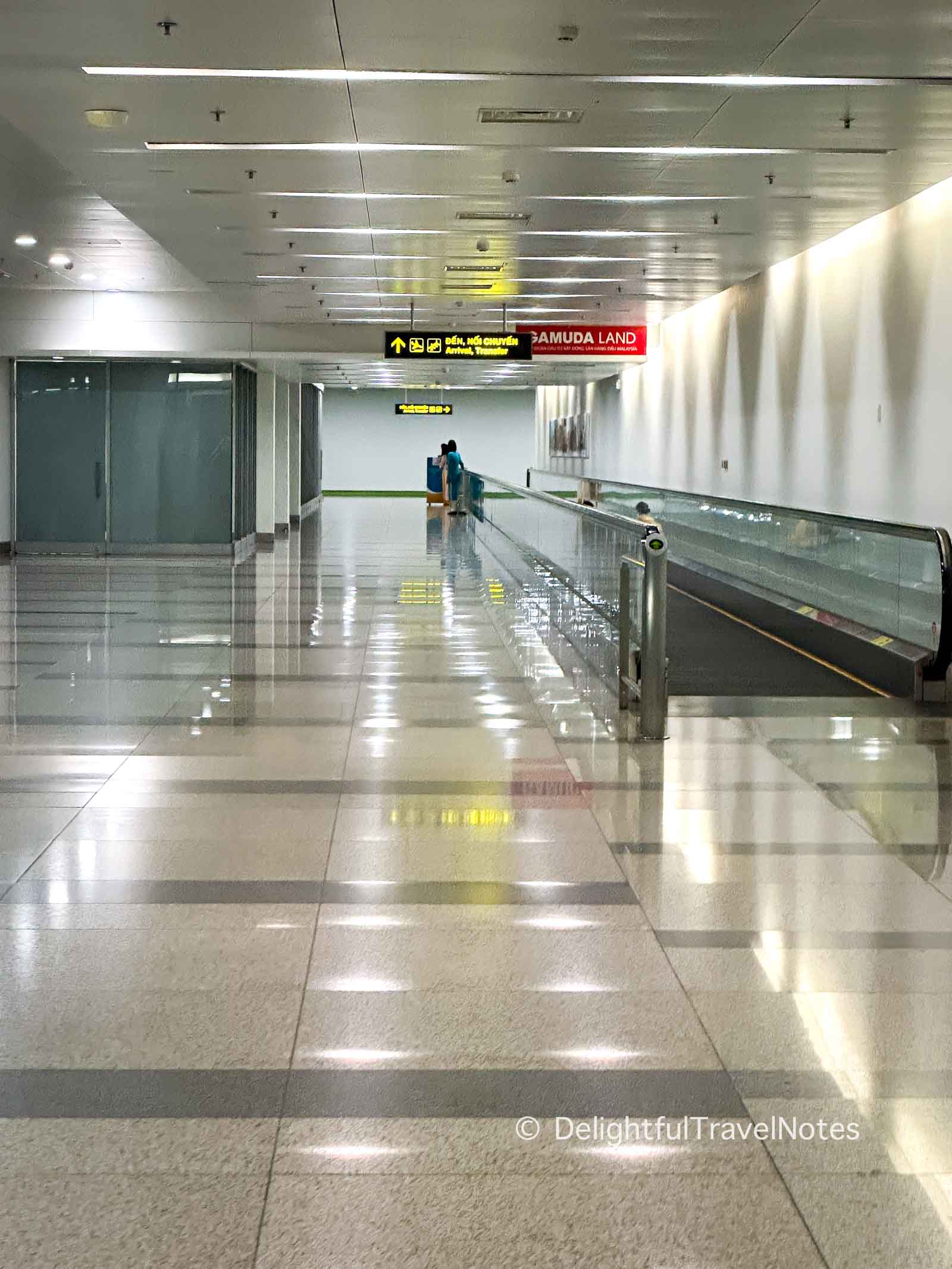
There are several airport and security staff member in the immigration area. If you are on a tight timeline to make to the connecting flight and the lines look long, talk to the staff. From my past experience and observation, airport staff in Vietnam are quite understanding about giving priority to those in a hurry to catch their flight. If you travel in business class, I believe you can use the priority line at immigration for express service.
Baggage Claim and Customs
Collect your checked luggage after passing through immigration (I will have some additional information from our trip regarding this in the next section). Then proceed through customs. Customs personnel may sometimes ask you to put your suitcases through the scanner, but generally, if you don’t have anything that needs to be declared, they won’t bother you any further.
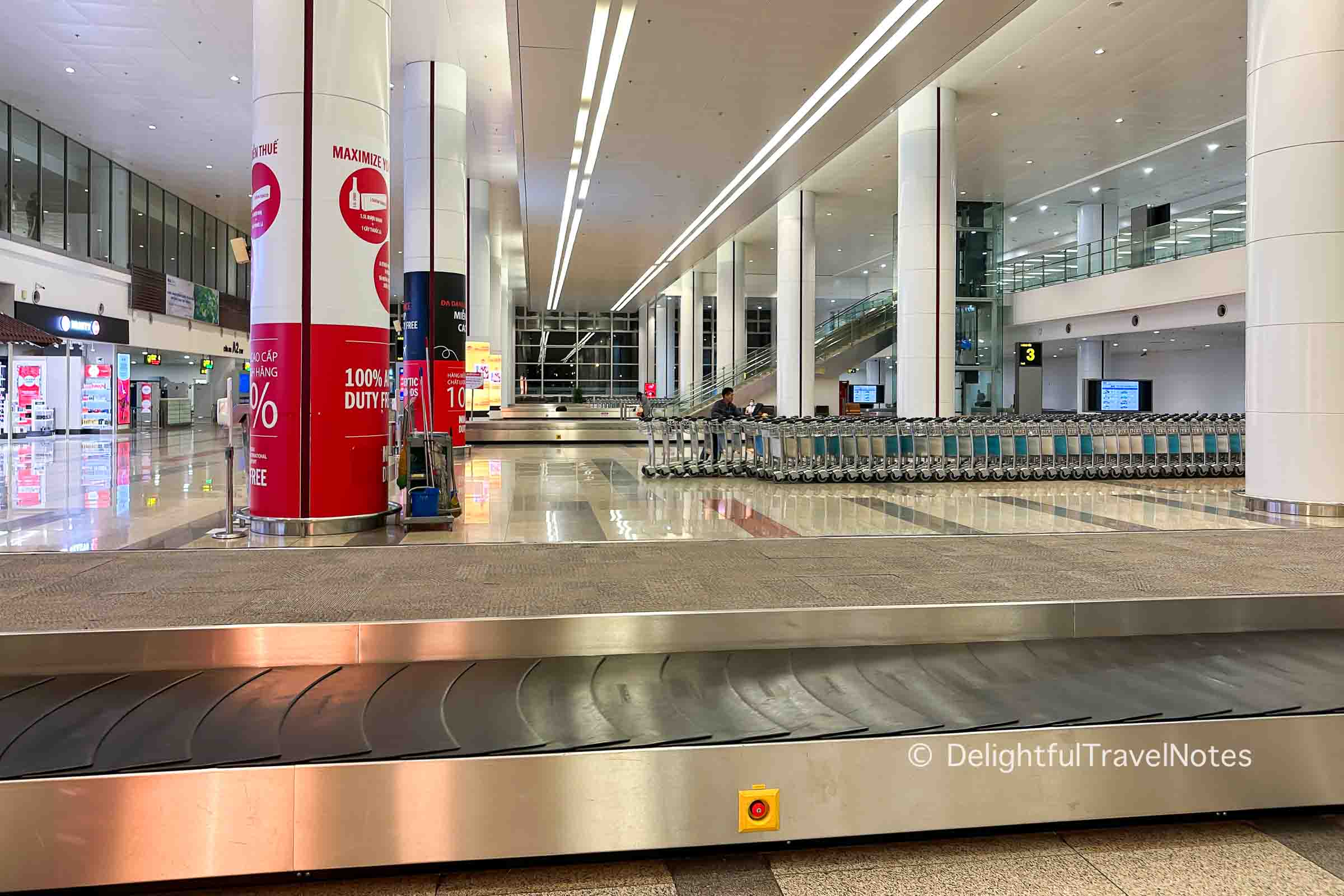
Transfer to the Domestic Terminal
Once you have exited customs, look for signs or inquire about the shuttle bus service that connects Terminal 2 and Terminal 1. You can also inquire staff at the Lost & Found counter in the Baggage Claim area about the shuttle bus transfer. The shuttle service is free and operates at regular intervals.
When we transited through Noi Bai Airport earlier this month, airport staff told us to exit the Arrival Hall and look for Column 12. Opposite Column 12 is the bus stop for the transfer service between the two terminals. The bus runs every 10-15 minutes and the ride from Terminal 2 to Terminal 1 is very brief, just 4-5 minutes.
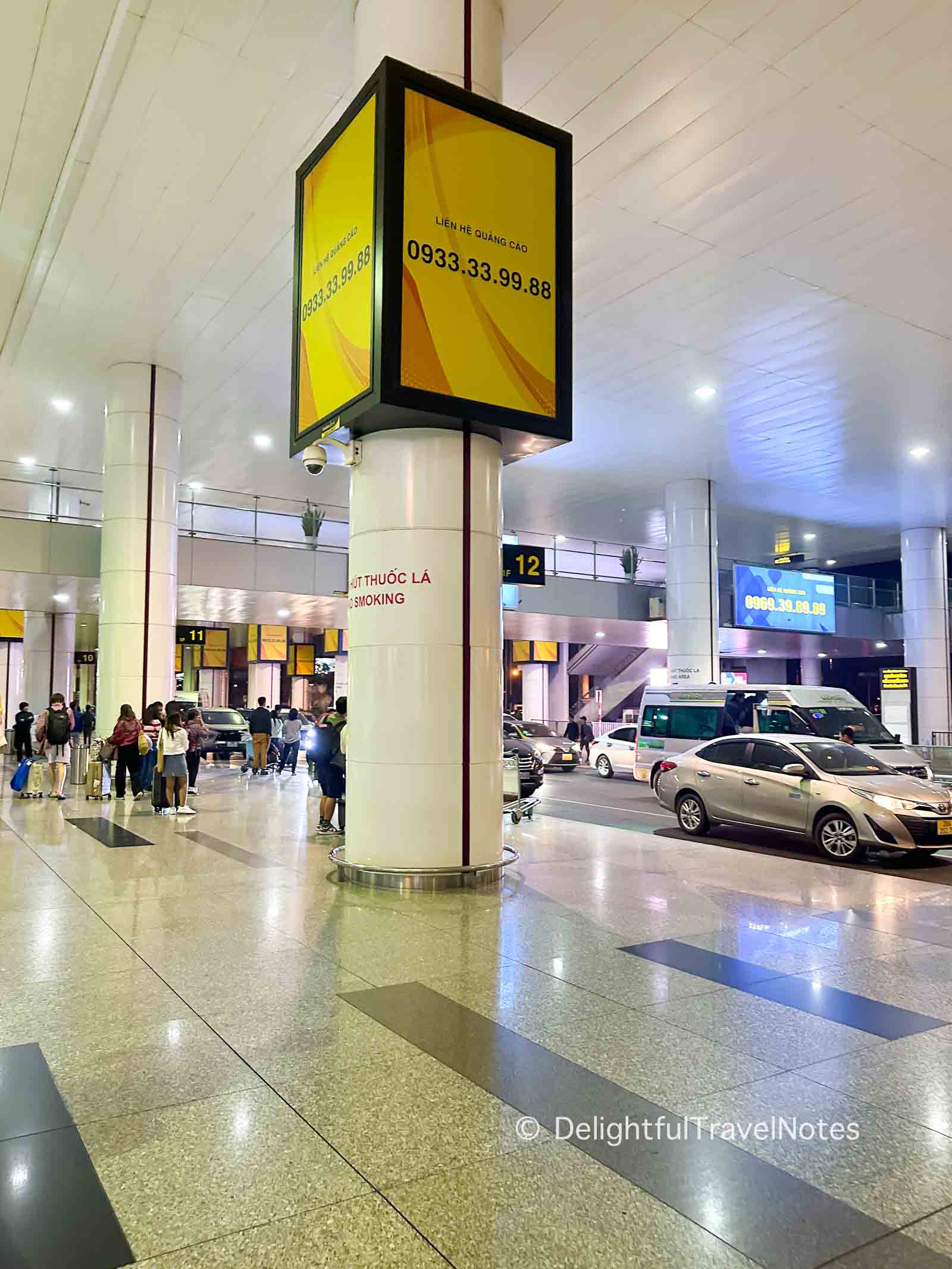
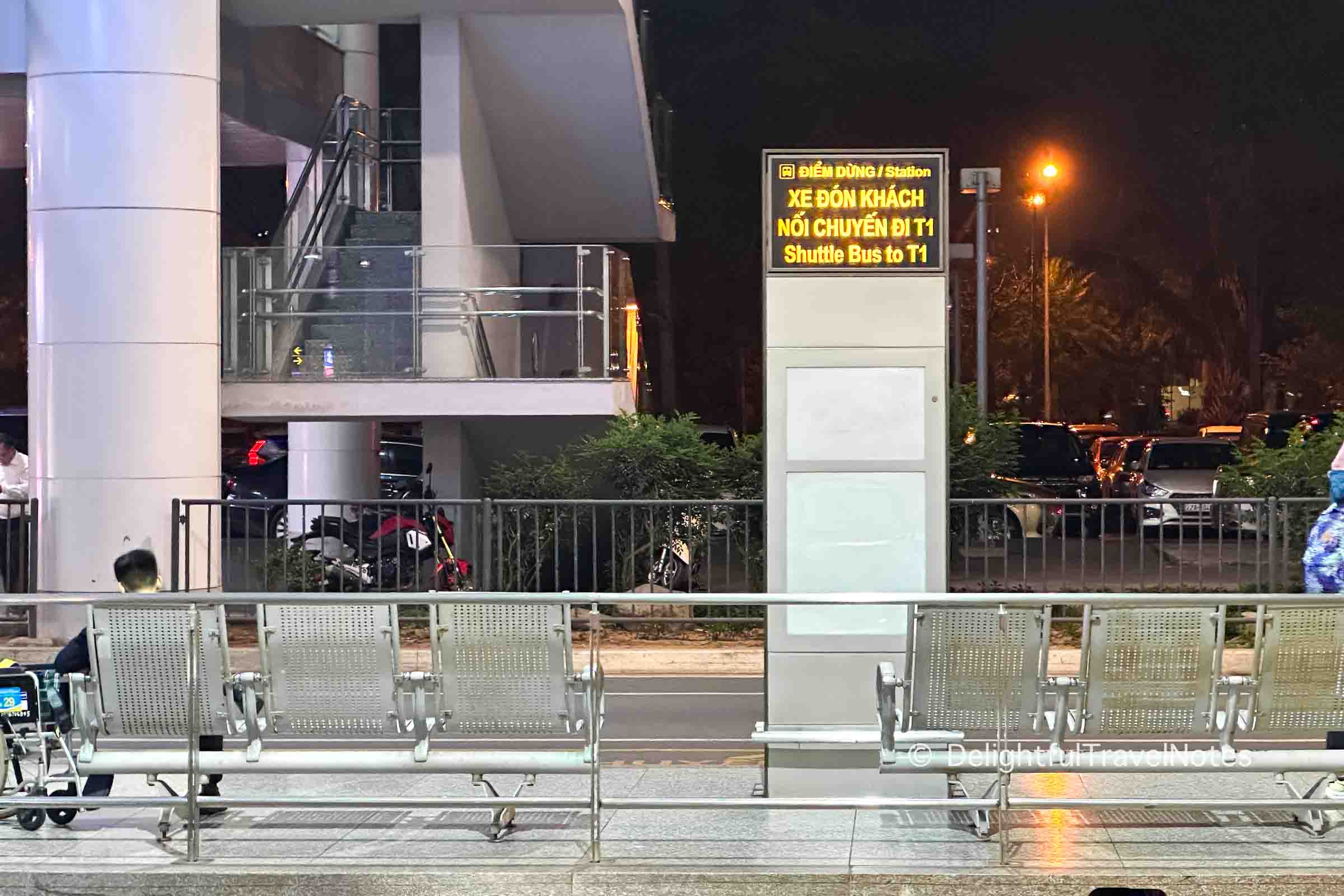
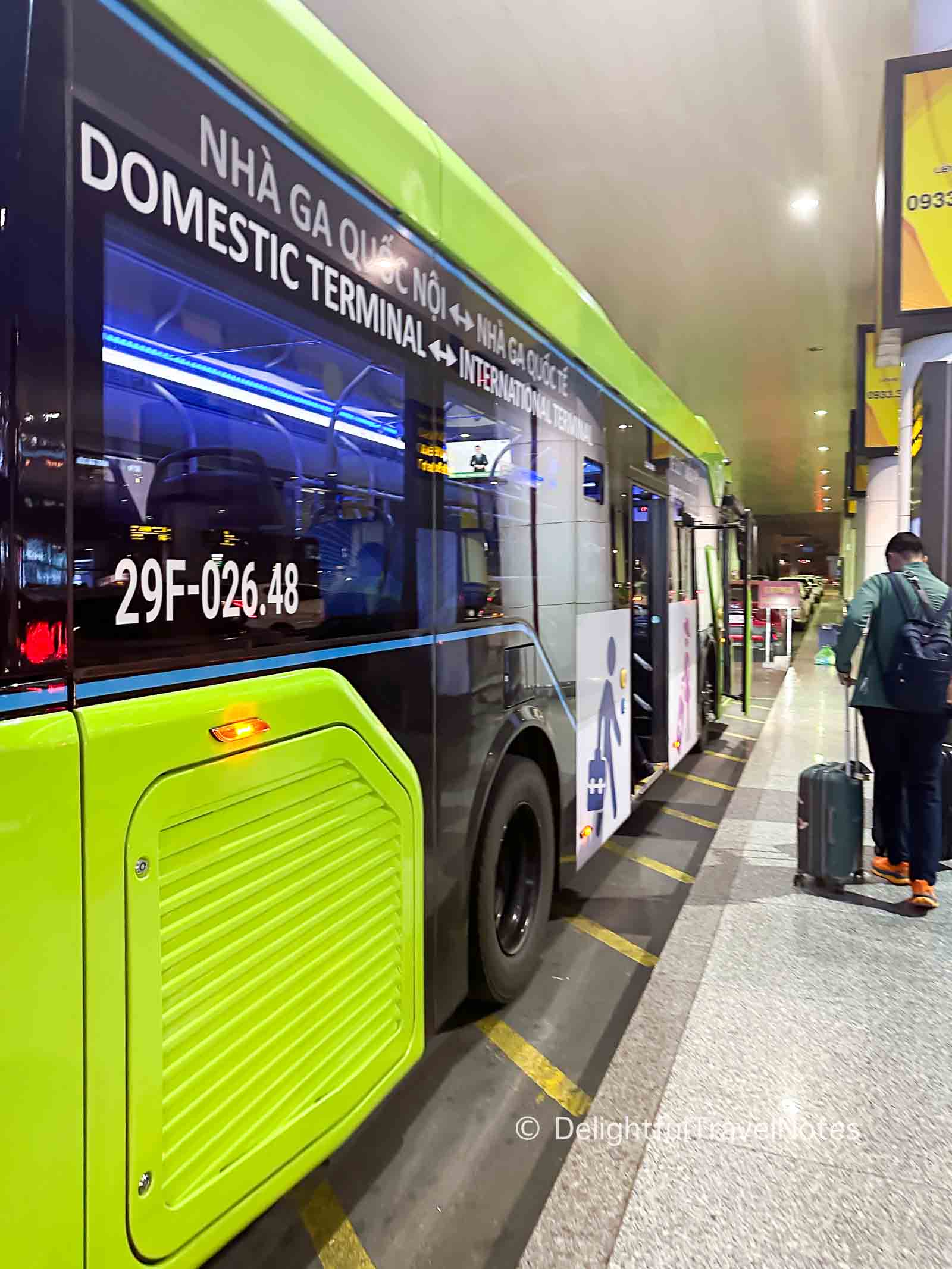
At the Domestic Terminal
Upon arriving at Terminal 1, proceed to your domestic airline’s check-in counter to drop off your luggage and collect your boarding pass if you haven’t done so already.
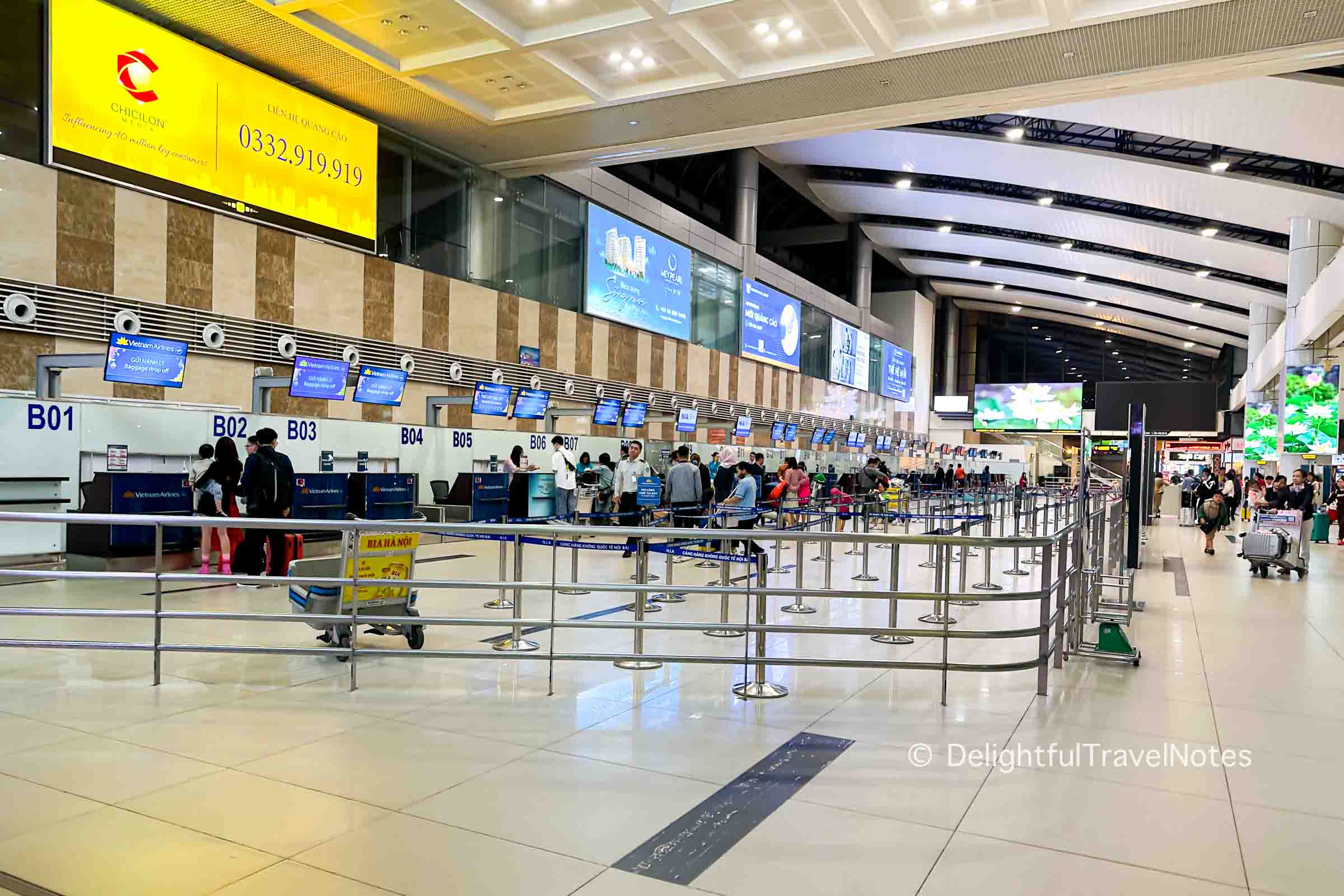
Go through security screening at Terminal 1 with your boarding pass and ID/passport. Again, if you are about to miss your flight, let the airline staff know. In Vietnam, airline staff can usually assist late passengers to catch their flight in time. If you travel in business class, there is a priority line at ID checkpoint and security screening.
After clearing security, check the flight information screens for your departure gate and any last-minute updates about your flight.
Our Personal Experience
We were flying from Luang Prabang to Ho Chi Minh City (HCMC) on Vietnam Airlines, with a connection at Noi Bai International Airport earlier this month. At Luang Prabang Airport, they printed our boarding passes for both legs of our trip as well as luggage tags sent to HCMC via Hanoi. Despite that, they told us we would still need to pick up our luggage in Hanoi and drop it off again. We were also given Transit stickers to stick to our shirts, which likely served to help airport/airline staff quickly identify and assist transit passengers.
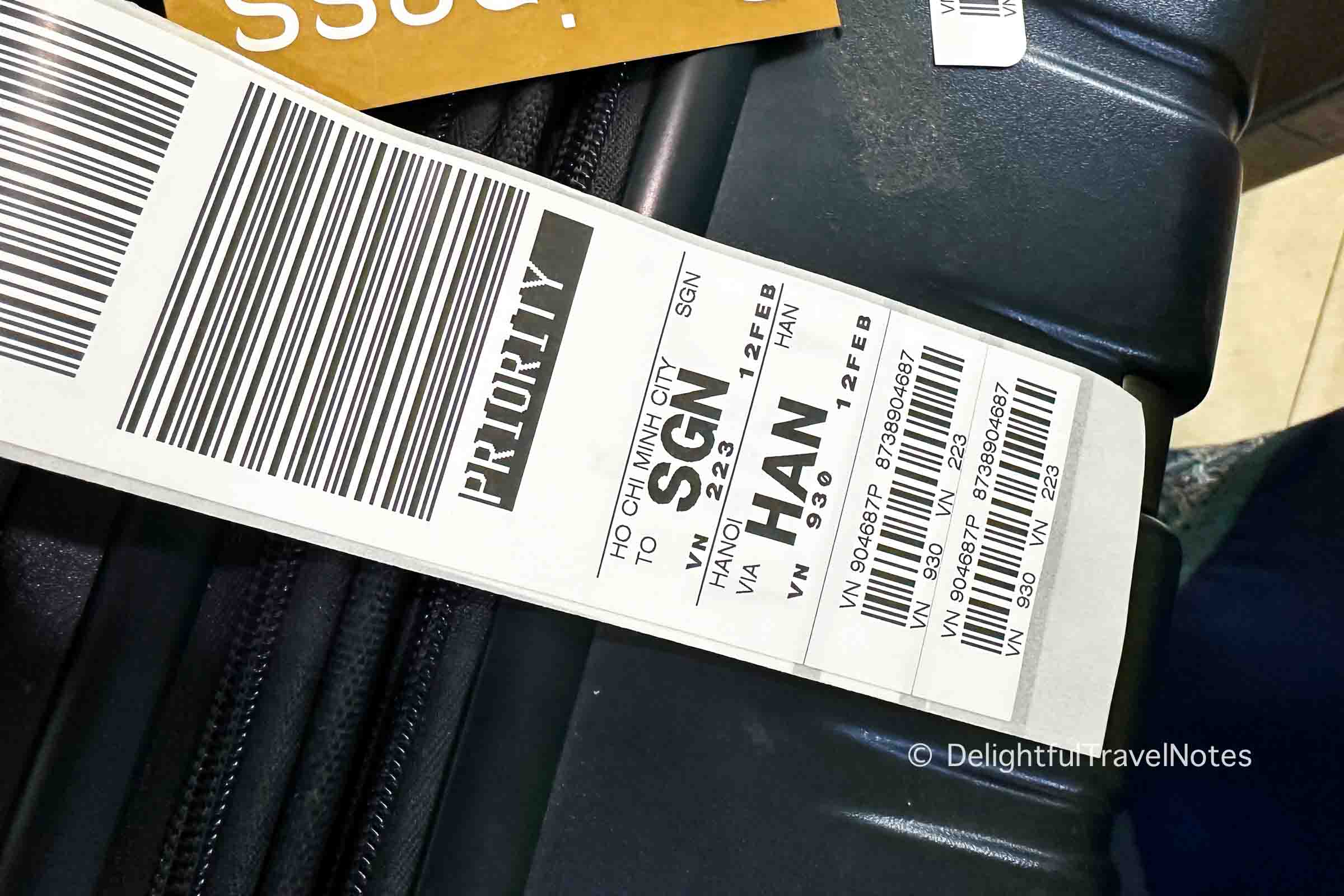
Our flight landed in Hanoi at around 8:30 pm, slightly delayed. Being in business class, we were among the first to disembark. We were transported to the arrival hall via a shuttle bus, and there was a staff at the immigration hall to assist transit passengers like us. She directed us to the second immigration booth from the furthest left for priority/express service. There was no one in line, so we got through within minutes. The regular immigration lines had about 10 passengers each.
We took the escalator down to the luggage belt, and our suitcases arrived after a few minutes. For clarification on transferring to the domestic terminal, we approached the Lost & Found counter. The staff told us to walk to Column 12 outside the terminal, where we would see the bus stop for the free electric shuttle to Terminal 1 was located. The shuttle arrived at 8:50 pm, waited for about 10 minutes, and then headed to Terminal 1. As mentioned above, it was a very short ride, just 4-5 minutes.
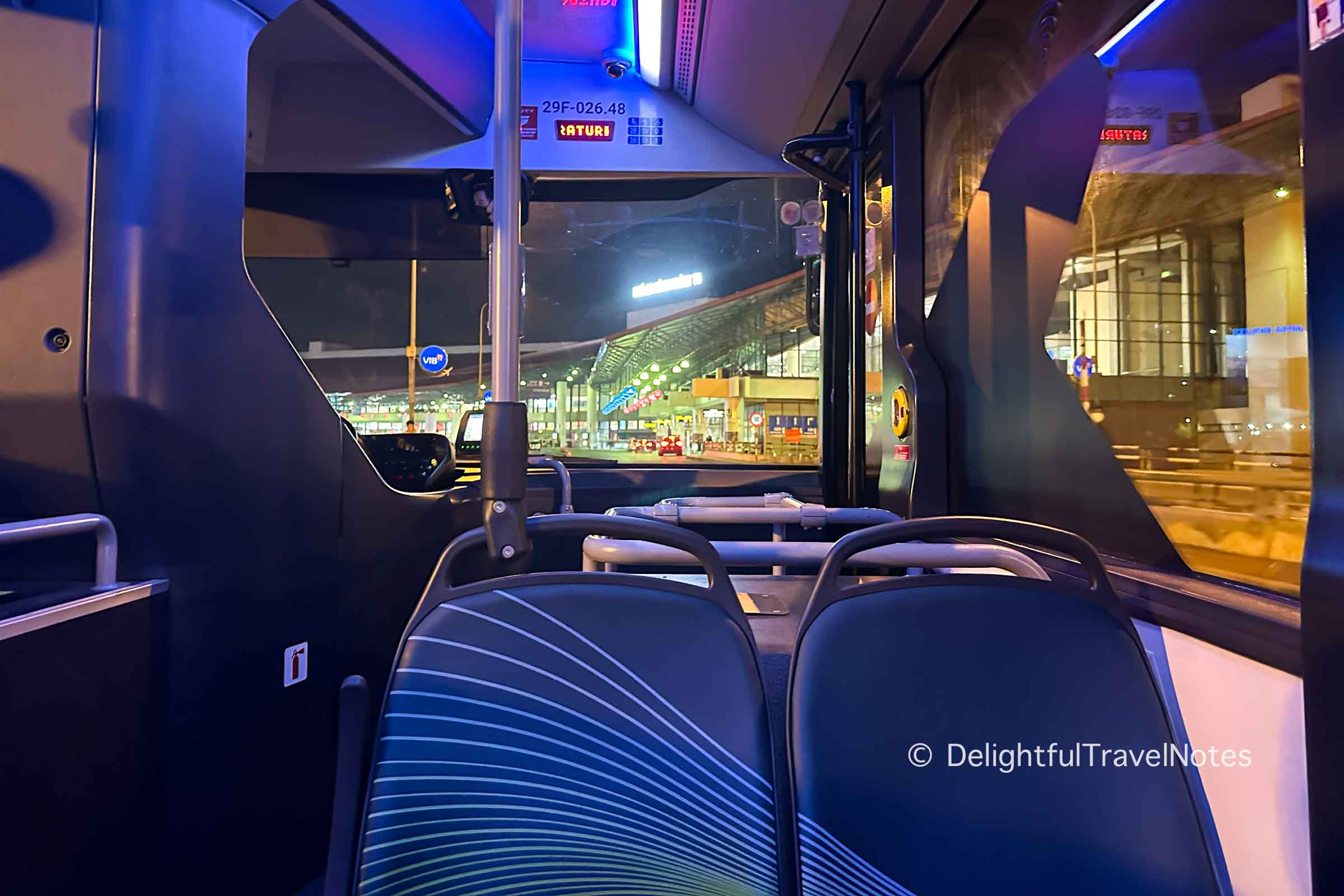
At the domestic terminal, we went to the Check-in counter of Vietnam Airlines. The staff told us we could have just taken our luggage off the carousel at the international terminal, and then handed it over to her colleagues there, who would have managed the transfer of luggage for us. We shouldn’t have had to take it with us to drop off at the domestic terminal since our luggage tags had been printed to check through to HCMC.
It was quite confusing to us what should have been done. Nevertheless, the check-in staff was happy to check our bags in again. It was only 9:05 pm, and our flight to HCMC wasn’t until 11 pm. She asked if we would like to be rebooked to an earlier flight at 10 pm. We agreed, so she printed the new luggage tags and boarding passes for us. It took her about 10 minutes to make the change and inform related personnel.
We proceeded through the priority line for security screening and immediately boarded the plane. The whole process took just a little half an hour from our arrival at the international terminal. I feel like since we brought our luggage with us to the domestic terminal, the airline staff was able to switch us to an earlier flight quite quickly and easily. If we ever have a transit at Noi Bai again, we will inquire staff at the international terminal thoroughly about luggage handling procedures.
Time Needed for Transit at Noi Bai Airport
Overall, it was quite easy to make a connection from the international terminal to the domestic terminal at Noi Bai International Airport in Hanoi. Business class passengers can expect a swift process thanks to priority lines available at nearly every step. For passengers in economy class, it will take a bit more time.
For peace of mind, it’s always best to allocate sufficient layover time. I suggest 2 hours for business class passengers, and at least 2.5 – 3 hours for economy class passengers (possibly even longer if you need a visa on arrival). For our Luang Prabang – Hanoi – HCMC trip, we made it with a 1.5 hour layover with business tickets, but we had very little idle time. We needed to board the plane right away after completing the security check at the domestic terminal.




Explore More
Best Places to Stay in Hanoi: Not the Old Quarter
Top Must-Try Restaurants in Hanoi – A Local’s Guide
Top 12 Best Vietnamese Restaurants in Ho Chi Minh City – A Local’s Guide